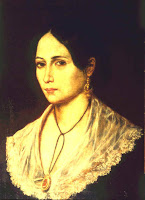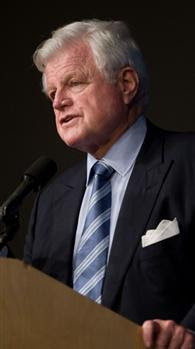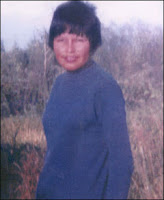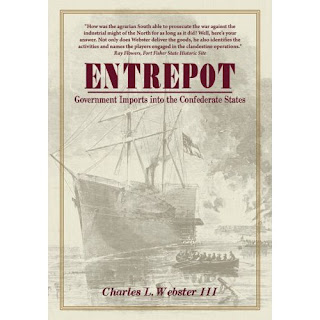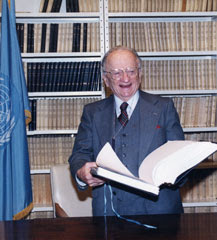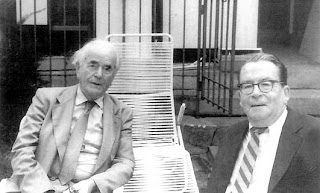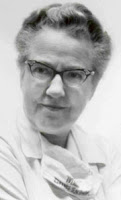Upon the passing of
U.S. Senator Edward Moore Kennedy (1932-2009) we reflect on his enormous impact on the United States and beyond (above,
photo credit). This
timeline from
the John F. Kennedy Presidential Library website lists just a few of the thousands of pieces of key legislation on which Senator Kennedy was a key actor.
Making Human Rights Real
The Senator’s work embodied a commitment to international and domestic human rights. And its reach exemplified the ideal expressed in
the Vienna Declaration and Programme of Action on Human Rights: “All human rights are universal, indivisible and interdependent and interrelated.”
It is difficult to name an issue of fundamental human rights with which the Senator was NOT involved. The range includes civil, political, economic, social, and cultural rights:
►
Equality Rights and Civil Rights (voting rights and legislation prohibiting discrimination against racial minorities, immigrants, girls and women, gay, lesbian, bisexual, or transgendered persons, and persons with disabilities).
►
Economic, Social, and Cultural Rights (including access to education, food, housing, fair wages and working conditions, substantive rights for people with disabilities, reproductive rights, major steps on the path to health care for all, support for the arts, and equal participation in sport).
His foreign policy influence was felt everywhere
from South Africa to Haiti, from Ireland to the former Soviet Union.
Memories…
Many of us spent the past few days (indeed, the 14 months since learning of his final illness) sharing personal stories about the Senator. I’m glad that he got to hear many of those stories himself and to bask in the standing-room-only crowds at the many award ceremonies over the past year. I'm glad he made it to the presidential inauguration. His final appearances, including to make legislative votes, were a demonstration of courage, selflessness, and will beyond belief. And I am glad to know that his surviving family is witnessing, and comforted by, the outpouring of appreciation and personal and public reflection on the incredible impact he, and his recently departed sister
Eunice Kennedy Shriver (1921-2009) (right,
photo credit), had on the world.
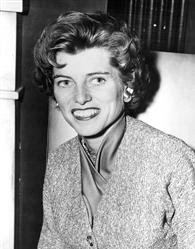
A legacy of wealth, celebrity, and political power is one thing. But it is less common for the powerful to leave the world better than they found it. Both siblings, born to a life of privilege and influence as well as personal tragedy, used those experiences for the benefit of others.
They joined and supported the struggles of human rights advocates. They galvanized others to help make social change longer lasting through legislation and through social movements in which millions continue to participate.
Many among those less famous millions who struggle for change leave the world without media recognition; we need to honor and treasure those legacies as well. But what has been so poignant and obvious about the passing of this brother and sister is the sense that they need not have done what they did for others. Yet they believed it was important to do what they could.
A Personal Touch
The lovely, unpretentious
wake/celebration for the Senator at the John F. Kennedy Presidential Library last night was full of moving and hilarious memories and stories. The powerful and famous from a variety of political leanings told of personal encounters with the senator. They talked about key legislation and the need for comprehensive health care and immigration reform to proceed of course. They also focused on what so many now know—he had a genuine gift for an authentic personal touch.
The phone calls to hospital bedsides, the visits to colleagues who had lost family members, the loyalty to trusted friends, and the basic respect and human decency he showed on a personal level even to tough political opponents.
Even more moving have been the stories from “the common people.” Thousands stood in line, or sat in wheelchairs, to attend the viewing at the Kennedy Library, but more than celebrity or a chance to touch history was at work. Many expressed the desire to say a personal “thank you.” Families of soldiers killed in war who received not only condolences, but legislative action to provide better defensive equipment or an end to war. The students in literacy classes and anti-poverty programs with whom he worked directly and who are now attending college. People with disabilities whose full participation in society was further enabled. People of color who worked with him to end discrimination in voting, housing, employment, and education. Girls and women who fulfilled their dreams of becoming athletes. Immigrants and refugees who escaped political or economic oppression at home. Family members who could take leave to care for the sick with less fear of losing their jobs.
Massachusetts has no shortage of hands-on politicians. It was
Tip O’Neill who said that “all politics is local,” after all. But the actual ability to have such broad and deep local and global impact is all too rare a gift.
Memories, Inspiring…
So I find myself compelled to share my own small, “brush with Kennedy” stories. More than twenty years ago I was a young lawyer at
TransAfrica Forum, the research and educational arm of TransAfrica, the African-American lobby on U.S. foreign policy toward Africa and the Caribbean. Back then, the organization had a total of maybe 8 staff (led by the great
Randall Robinson, our executive director). We worked from a small storefront office in southeast Washington, DC, and believed we could change the world.
Staffers who worked on or near Capitol Hill often referred to DC power elites in hushed tones—“the Congressman,” “the Senator,” “the Chairman,” “the White House.” Congressional staffers were often judged by their supervisor's prestige or reputation as well as by their own merits.
Needless to say, “the Senator’s” staff was legendary; a call from Senator Kennedy’s office was a game-changer in most venues—it still is today. It was also clear that the staff who worked there were talented in their own right and serious about the Senator's agenda.
That is why Senator Kennedy’s
support for the Anti-Apartheid Act of 1986 was so important. Passed over the veto of then President Ronald Reagan, that Act helped show substantive solidarity with the struggles of millions of Black South Africans for democracy, human rights, and an end to the horrendous system of apartheid.
One of the most memorable moments of my career, therefore, was watching the final votes to override the veto from the Senate gallery. Senator Kennedy’s office had sent passes for us TransAfrica staffers to do so.
Some hours after we celebrated the vote (and began thinking about next steps), I found myself the last one to leave the TransAfrica office. The phones had been ringing off the hook and the overworked receptionist had finally called it a day.
As I headed home, the phone rang again. It was the Senator himself, calling to speak with Randall Robinson.
I somehow managed to find my voice, telling him (he had, quite unnecessarily, introduced himself as “Ted Kennedy”) that Randall was gone for the day. The Senator said “Thanks. Well, please be sure to tell Randall that I called personally to congratulate him.”) Well. After thanking
him for introducing and supporting the legislation, I got off the phone, tracked Randall down, and then started calling family and friends to tell them that I had just “spoken with the Senator”!
At the time, that would have been exciting enough for me, but the Senator also showed up at our small office a few days later to personally shake hands with staffmembers. Each of us had that dazed, star-struck look in our eyes (some had grown up with pictures of Martin Luther King, Jr., President John F. Kennedy, Jr., and Senator Robert Kennedy on our walls). But he did his best to make us feel as if we had done a little bit to help change the world.
…and the Hilarious
The second story is more along the lines of the absurdly funny (to me, anyway). Perhaps a couple of years later, a good friend and I wanted to see the prize-winning
August Wilson play, The Piano Lesson, then in its first run at
the Kennedy Center for the Performing Arts. Driving by one evening, we decided to pick up some hard-to-get tickets. We noticed a surprisingly large number of stretch limos and motorcycle police outside when we pulled up. Still, we just needed to pick up a few tickets, what could it hurt to go inside?
Wearing what President Nixon might have described as
“good Republican cloth coats” (in fact, we were good Democrats) and casual clothes, we followed a small woman wearing a rather large fur coat through the glass doors. Lining both sides of a very long red carpet inside were crowds of photographers and people in evening wear. We still did not quite “get it.”
As we made our way up the red carpet, a mystified-looking usher gestured us toward the main hall. We asked him where we could get tickets to
the Piano Lesson. Even more mystified, he told us that the box office was closed for the evening. At that moment, we both turned and saw Senator Kennedy near us greeting people who were standing behind the rope barriers. Horrified, we blurted out simultaneously, “it’s
the Kennedy Center Honors!” That event is a star-studded annual gala at which the Center honors performers for their contributions to the arts.
Mortified, we shrank back against the ropes so as to avoid drawing further attention to ourselves. The tuxedo crowd behind us literally pushed us back onto the red carpet, complaining that we were blocking their chance to meet the Senator. They were there first. Who were these under-dressed interlopers?






